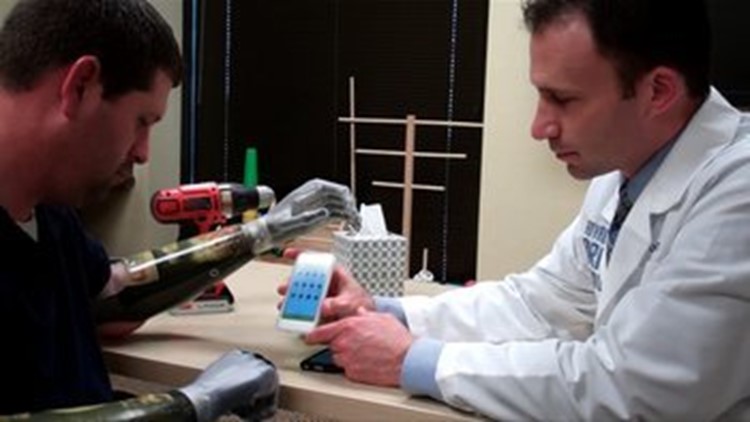Editor’s note: Jason Koger talks with Dr. Sanjay Gupta and demonstrates his new hands on “Sanjay Gupta MD” at 4:30 p.m. ET Saturday and 7:30 a.m. ET Sunday.
(CNN) — Jason Koger is happy to be alive.
In 2008, the young husband and father was riding his four-wheeler on his grandfather’s farm when he came in contact with a downed power line.
His body was jolted with 7,200 volts of electricity.
“I remember waking up from an induced coma a few days later and being told that they had to amputate my both hands in order to save my life,” said Koger, now 34. “My mom and dad kept telling me that I would get through this.”
And he has. Since his accident, Koger has had a variety of prosthetic hands to help him function with his “new normal” in everyday life.
“It’s like I’m carrying a tool box, but only have one tool,” said Koger. “You can’t use a wrench for everything.”
In recent years, the prosthetic devices field has seen remarkable developments.
And Koger is the first double amputee in the world to receive one of the most innovative products on the market: bionic hands that are, in part, controlled by an iPhone app.
The i-Limb Ultra Revolution is the latest innovation from UK-based prosthetic developers Touch Bionics.
The hand offers “unparalleled dexterity and control, enabling wearers to more easily perform activities of daily living and thus increase their quality of life,” said Ian Stevens, CEO of Touch Bionics.
The company claims it offers the closest thing on the market to a real human hand.
Unlike most conventional prosthetics, this hand boasts five individually-powered fingers — including a fully rotatable thumb.
“This is something we’ve never seen available for patients before,” said John Miguelez, senior clinical director at Advanced Arm Dynamics, who is not affiliated with Touch Bionics.
The prosthesis also has an auto-grasp feature, which prevents accidental slippage when, say, holding a soda can or picking up an apple.
But the most unique part of the prosthetic is the app control. On an iPod Touch or an iPhone 5, users can select 24 different types of grip patterns that will allow more functionality.
“If you are holding a computer mouse (and) you want to right click, that is a complicated thing with a prosthetic. But this integrated app technology allows a person to do this with ease,” said Miguelez.
These are basic movements many of us take for granted: a tri-pod grip to pick up a pen, or hand-shake grip for business meetings, said Miguelez, who has fitted hundreds of amputees with prosthetic devices.
“For the first time in five years I can hold my daughter’s hand,” said Koger. “I can’t tell you what a gift that feels like.”
Users can also customize grip patterns through the integrated app technology.
“Let’s say you want to go out and play pool with your friends. You can customize a grasp pattern that allows you to hold the pool stick — or if you like to do handy work, you may customize one to hold an electric drill,” said Miguelez.
The hands are not waterproof, which is one reason Koger says he’ll still keep his other prosthetics, like his metal claw, available.
“Nothing is perfect, but I feel like I can be a more active participant in everyday life with these hands,” said Koger, who now spends his time reaching out to new amputees about keeping a positive outlook on their situation.
“I can do pretty much everything I could before; it just might take me a little longer.”



